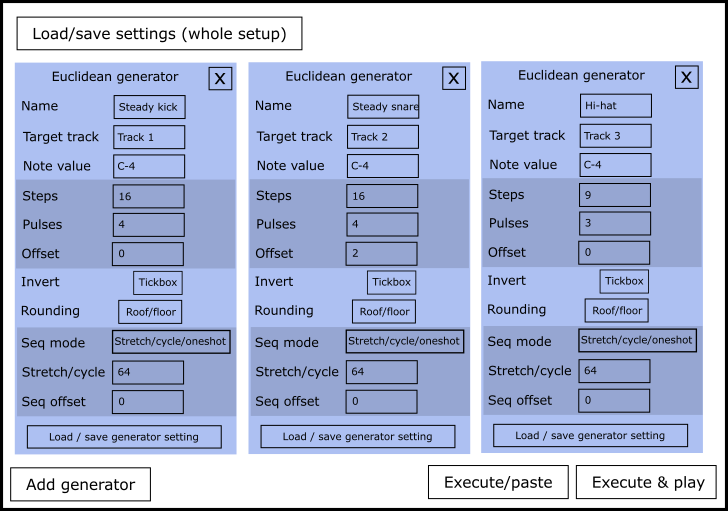I’ve scanned the market for euclidean rhythm generators, and they are surprisingly few and simple. I think a tool like this would easily make Renoise the most powerful option for us interested in generating euclidean rhythms.
I’ve also added a few ideas of my own:
Invert: inverts hits and non-hits.
Rounding: choose between floor or ceiling (the “snapping” that euclidean generation does in sequences that have remainders).
Reverse (tick on/off): Reverse euclidean sequence. I forgot to add this in the mock-up.
A bonus feature is that by setting a note value to “none” and directing to an already generated track, you could create mutes (i e don’t insert kicks when clashing with snares). Or paste a mute rhythm with inverted hits onto any track! (this would filter any track thru a euclidean rhythm!!).
I could very well script this, but the problem is that the code would not be very beautiful. I rely heavily on function oriented programming since I really haven’t understood the object oriented stuff yet 
Or perhaps a similar system could be made with custom modules in the xStream tool?
Anyone find this interesting?
Some resources:
PDF: http://cgm.cs.mcgill.ca/~godfried/publications/banff.pdf
Online beat generator: http://www.groovemechanics.com/euclid/




 I think we’d have to add some delay value maths, making everything run thru a dly value calculator.
I think we’d have to add some delay value maths, making everything run thru a dly value calculator.